Have you recently got your new puppy home? Its time to get Puppy Tips For The First Week!
Are you worried about questions such as “where should my puppy sleep on the first night?”,” What should I do with a new puppy?”.
If you still haven’t figured out what type of dog will be suitable for your home, reading a checklist would help you understand and finalize your perfect match.
Puppy tips for the first week article explains what factors you should take care of when you have got your puppy home in the first week.
Get onboard where we try to guide you on how you should spend the first week with your puppy.
Table of Contents
Essential Supplies
Before a dog comes to your home, you should be ready with some dog essential things that your dog would need while staying with you.
If you haven’t already brought them, don’t worry.
Here is a list which will help you check if you missed out something while preparing to get ready for your new puppy.
A. Dog Food:
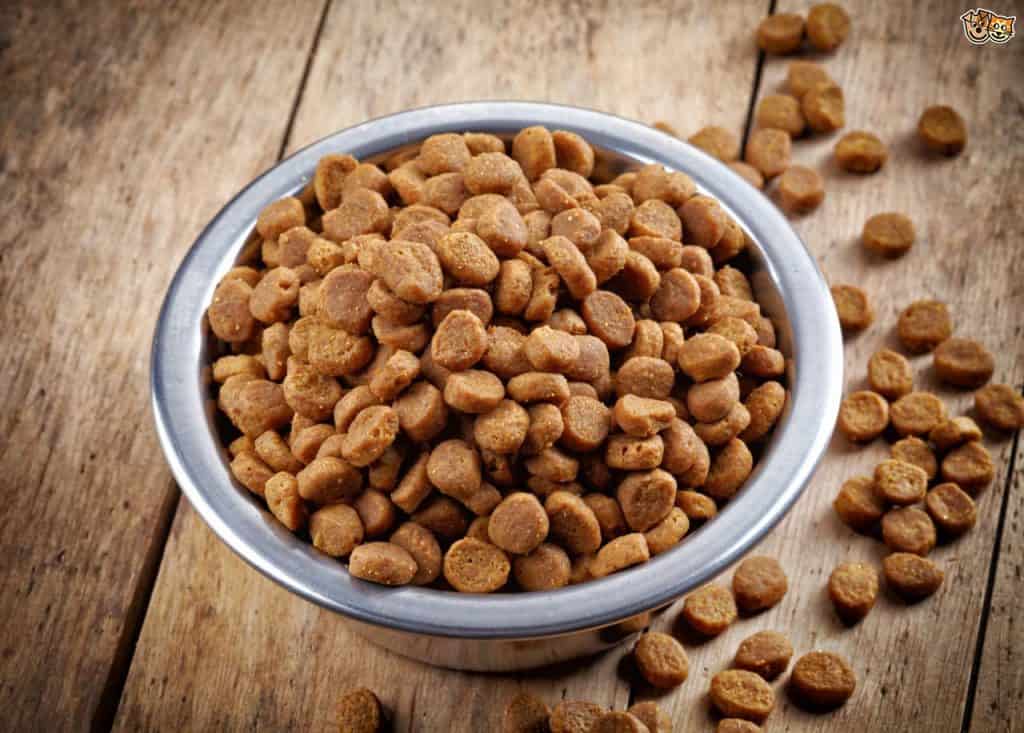
If you’re getting a new puppy then you may want to buy the best dog dry food available in the market.
You can also try making homemade recipes for your dog food.
A newborn puppy needs mother’s milk for his nutrition.
For about 6 months a pup isn’t ready to eat dry food.
Once he turns 6 months old you can start feeding him dry dog food.
You can moisten it with some water to make it easily chewable.
A puppy above the age of 6 months needs to eat 4 times a day.
In the market, you’ll find a dog food with different chunk sizes and nutritional ratios.
Don’t get tempted by those adorable puppy eyes when they ask for more food.
Unless recommended by the vet, don’t overfeed them.
That wouldn’t be good for their long-term health.
Dog food also differs according to the size of the breed.
Ask your vet about what brand or type will suit your pup.
B. Dog Crates/ Baby Gates:
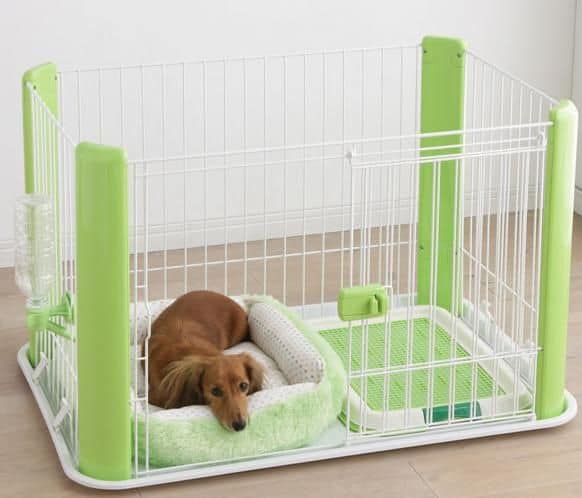
For the first week in your home, your puppy needs to understand its boundaries.
Keeping dog crates indoor are a good means to teach your dog boundaries.
Make them aware of the full house within a span of time.
If you show them all the places in one day, they are likely to start eliminating everywhere.
Give them a space of their own.
Baby gates also help in protecting the puppy from other hazards in your home.
Confinement is an essential tool for potty training.
C. Toys and Treats:
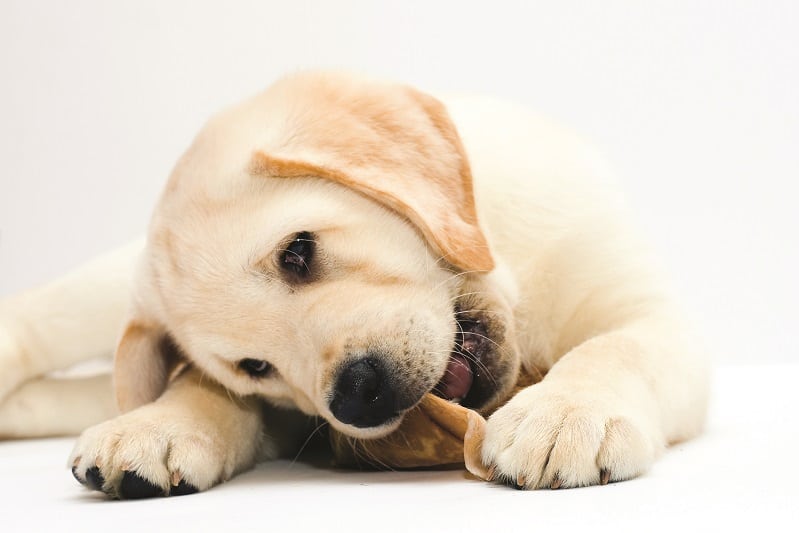
You will need to buy toys for a breed that has a high potential for Mouthiness.
Even if your dog’s breed is not so mouthy, puppies have a habit of chewing things that are in their close proximity.
If you don’t want your favorite shoes to be torn, make sure you give them enough chew toys to chew on.
Chew toys are a great way of distracting them from chewing on other things in the household.
Bring them other toys too which will keep them busy while playing.
Once their chewing phase is over, you don’t have to worry about getting your shoes torn.
You will have to buy treats for reinforcing good behaviour while training your dog.
D. Food and Water Bowls:
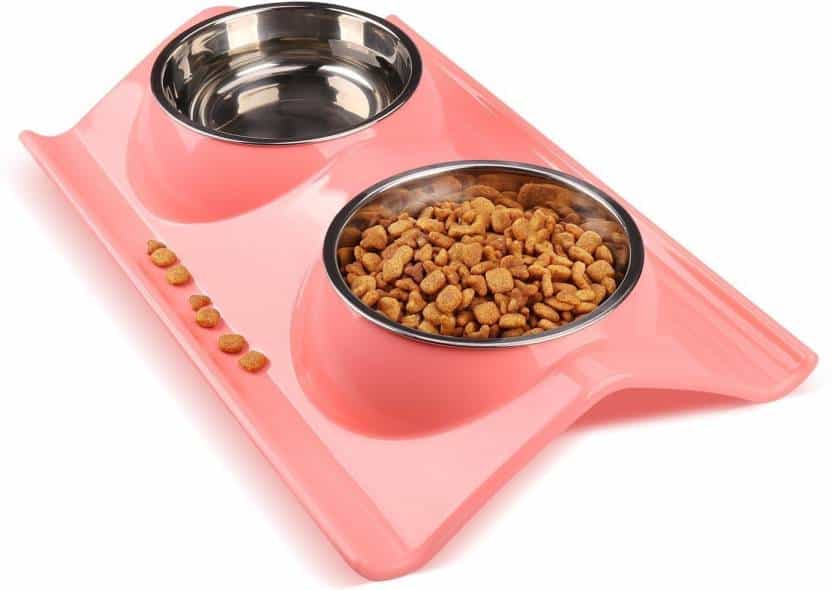
You have to buy separate food and water bowls for your dog.
You have to ensure that you keep those bowls in a safe place.
In daily life, when your dog is being playful, you may end up kicking the bowl with your foot.
Find a safe place and let your dog know when it’s lunchtime so that he associates that spot with food.
E. Grooming Supplies:
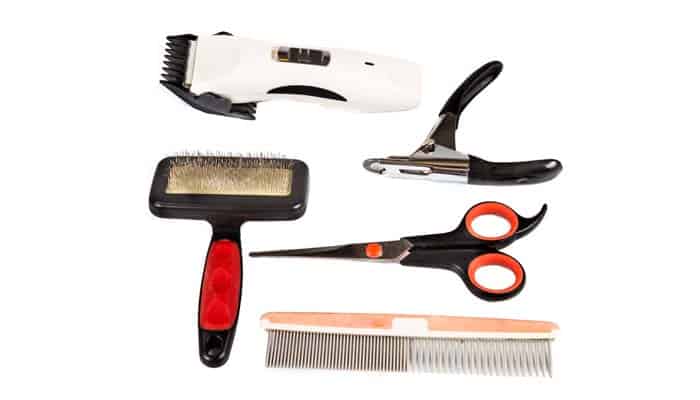
Depending on your dog’s shedding pattern, you may want to buy different types of brushes or trimmers exclusive for dogs.
Special flea combs for dogs to get rid of fleas are available.
Dog shampoos are difficult to choose in the store.
You may want to try out some of the shampoos on your dog and then see which suits them the best.
If you don’t think it’s a good idea to get shampoos from a store because of the chemicals used in it then you can read some DIY Dog shampoo.
Grooming also involves cleaning of ears, teeth, nails, and paws. Consider buying the following things:
- Nail clippers for dog’s nails.
- Tweezers or forceps with a cotton swab for ears.
- Finger brush to brush their teeth.
- Moisturizing paws to prevent tearing of the skin.
F. Dog Bed:
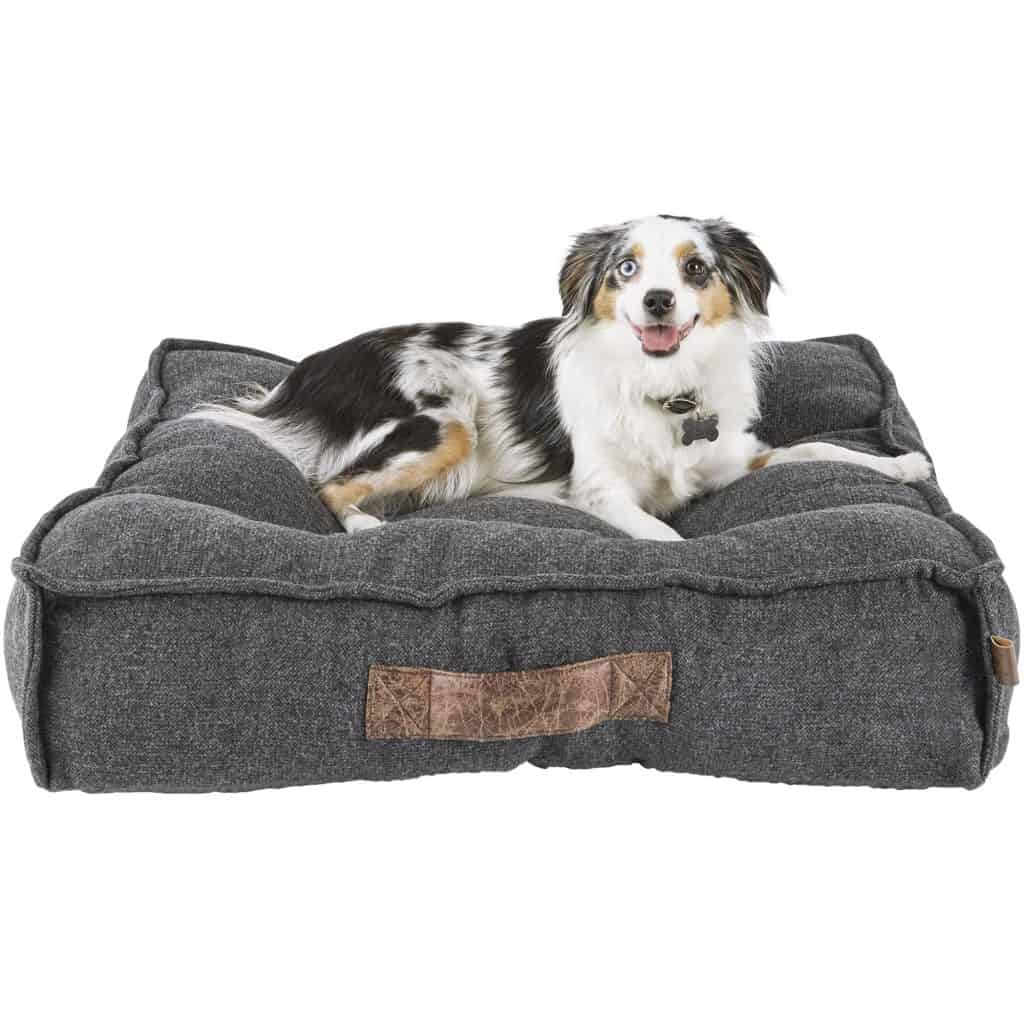
You can buy a dog bed suiting your home décor.
This can be done after the dog is given housetraining.
Once he is comfortable with crates and has had his training, you can shift him to the dog bed.
Some beds are made using recyclable materials.
If your dog starts chewing his bed, try using anti-chew sprays and ensure he gets enough exercise so that he doesn’t get involved in destructive behavior.
Puppy-Proof

Before they start living with you, make your house puppy proof.
Ensure to keep all wires, electrical things, chemical solution, and plants out of reach of the dog.
Things that you think the dog is going to chew and is in his reach, should be kept inside closets or cabinets.
Do not let human food lie down on the floor because some human food may be toxic for your pooches.
Cover sharp corners.
Make Them Comfortable To Your Touch
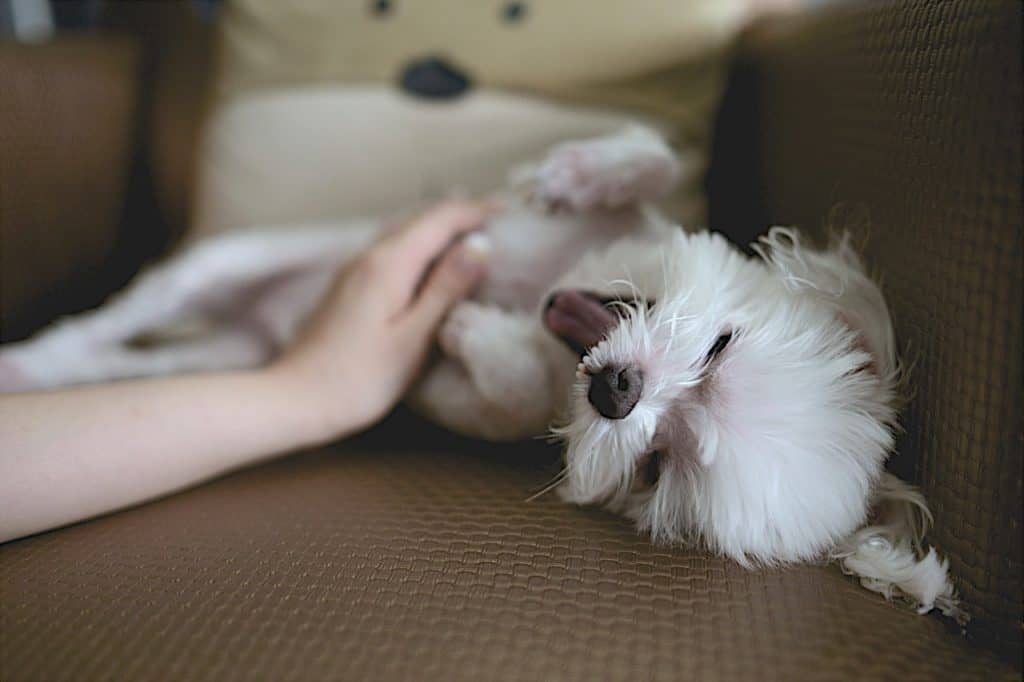
In the initial days, you will have to build a relationship with your dog where you both have to be comfortable living with each other.
Dogs have to be comfortable with your touch.
You have to gently start touching them from where they can see your hand.
You can pet the dog on the shoulder, on the top part of his neck, on his belly.
You can even hold one of its paws and shake hands with him.
Decide on a name so that you can start training them by calling their name.
Choosing a two-syllable name would make it easy for him to understand.
It would also help him differentiate between simple words like “no” and “crate” and his name.
Socializing
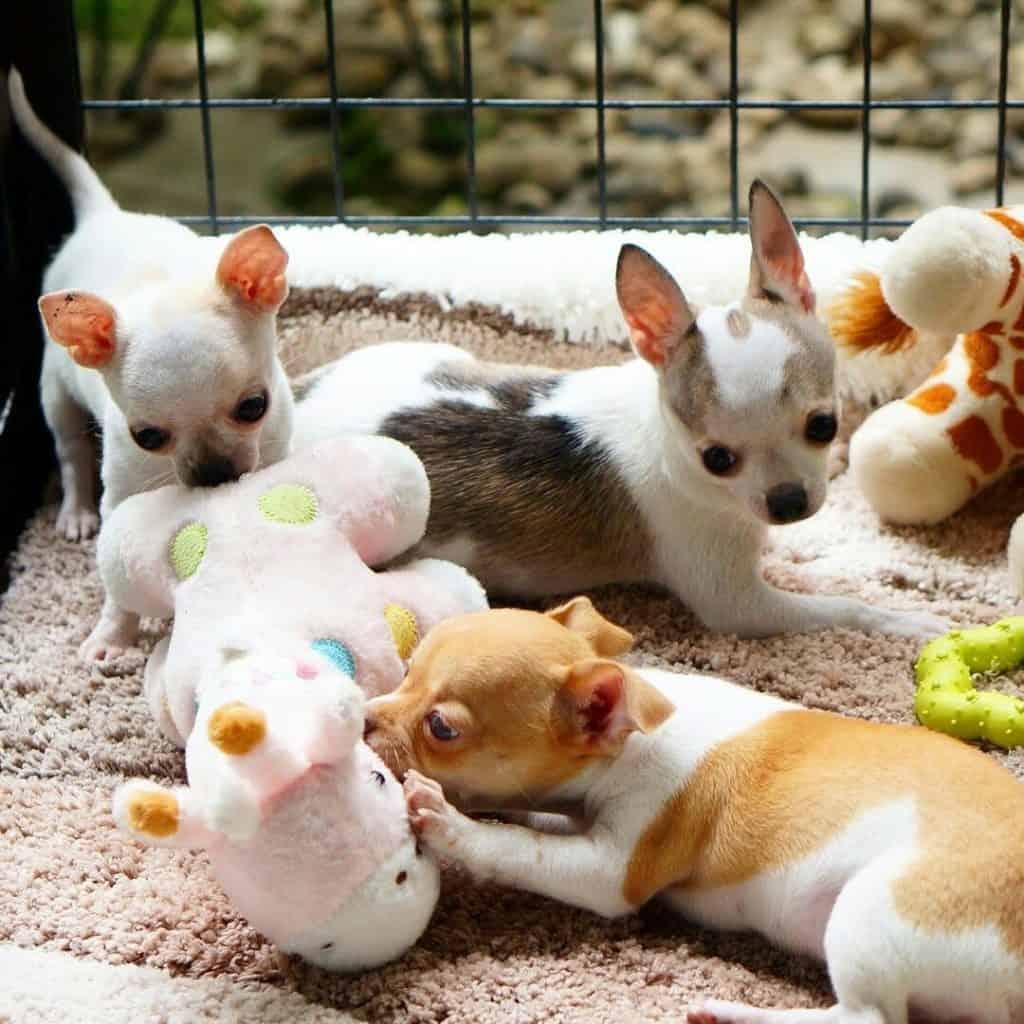
Six to thirteen weeks is the period where the puppy should see and explore his surroundings.
The more people and situations he sees, the more he grows into a well-developed adult with stable emotions.
This will help him get along with strangers.
Whereas if he is kept indoors all the time, he may grow into an introvert, grumpy or afraid dog.
Getting Familiar With Leash And Harness
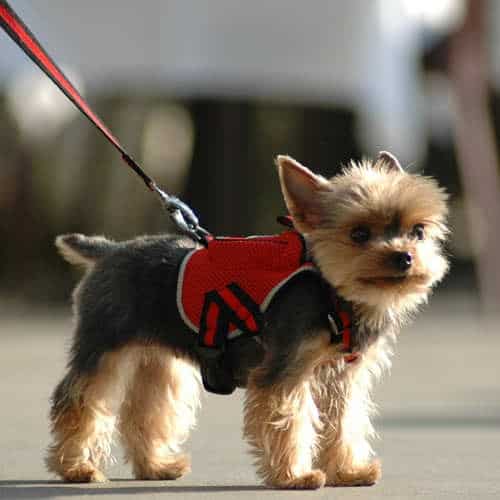
The leash and harness have to be according to the size of your puppy.
It should neither be too tight nor too loose for your puppy to escape.
You have to associate a feeling of fun and treats with wearing the harness for your dog.
Initially put on the harness on the puppy for short periods of time.
Once he starts responding by taking steps with you, reward him.
Practise walking indoors with some distractions.
If he passes then take him outdoors.
Housetraining
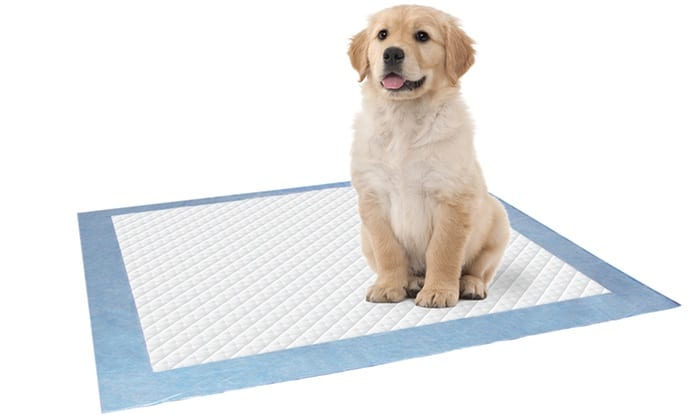
A puppy who is just 8 weeks old is too young to start housetraining.
But you can start it early to prevent daily accidents and soiling around in your house.
At an early age, you don’t expect them to go outside to eliminate on their own.
This can be used as an initial training to start forming a routine.
When you take them out every hour, they will start getting accustomed to those specific timings.
The right time to start Potty training is at 12- 16 weeks of age.
Basic Training
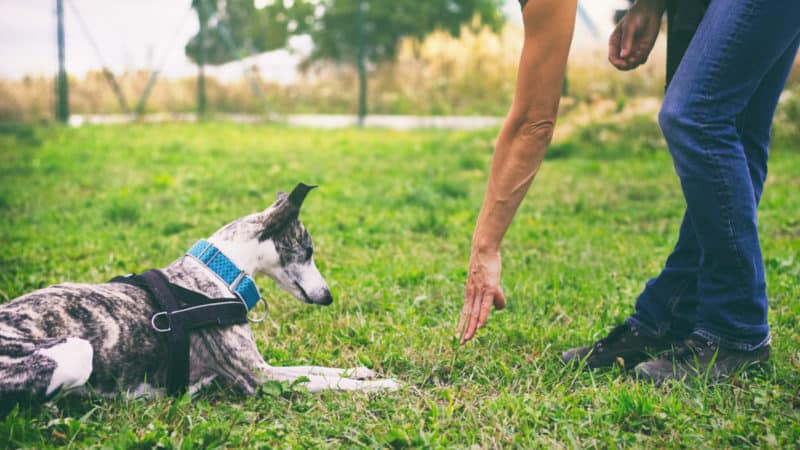
Basic commands training can start at the age of 7-8 weeks of the dog.
You should first start by making him come to you when you call out their name.
The association of calling their name out with the walking behavior has to be established.
Simple obedience commands like “sit”, “stay”, “yes”, “no” can be taught using the food-lure training.
It tries to associate treats with obeying commands.
After the training is successful, the treats have to be phased out.
Try not to punish them as they may develop fear or get confused about what is expected of them.
Read a detailed guide on Basic Command Training on our website.
Health

Search for a vet clinic or a pet hospital nearby.
Get him an early diagnosis before even bringing him home so that if there is an underlying disease, you will have knowledge of that.
If you’re buying it from a breeder make sure you have enough knowledge about the breed you want to bring home.
If you’re planning to adopt a pet, make sure she is vaccinated and dewormed.
You may have to face difficulties with making them adapt to your home environment.
If they may have had bad experiences or memories from the shelter or previous owner, they may be subject to getting nightmares.
Confinement
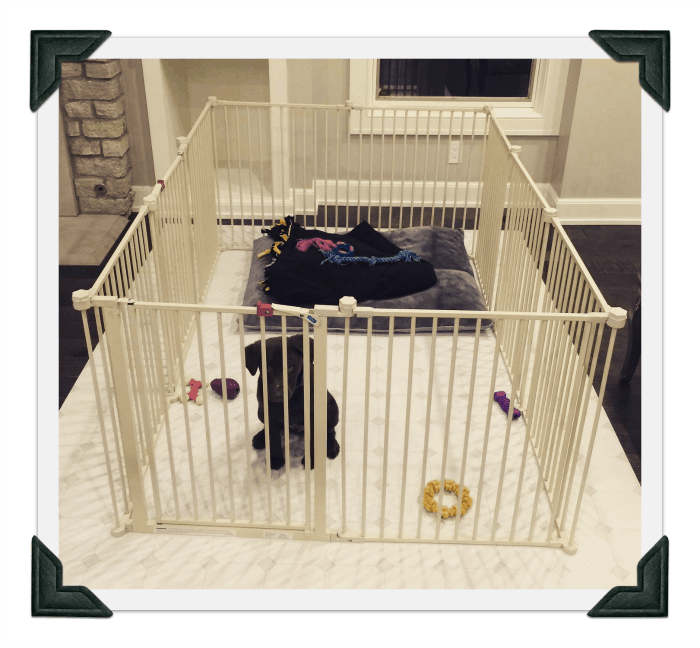
Your dog has a natural curiosity to roam around the whole house but you need to limit them.
Confinement is necessary because later in life it would help you to go out for work without worrying, traveling and housetraining.
It will also help you prevent damage from his chewing and keep him safe too.
Sometimes confining an adopted dog or rescued dog results in them showing out their behavioral problems.
Some dogs eat their own waste which is harmful and these dogs take longer time to get trained.
Leave Me Alone!
In the first week, you would be overwhelmed to finally have a puppy with you ALL THE TIME in your own home!
But no matter how small, every living being needs their space.
You have to leave your dog for some time and stop hovering over him.
He is likely to spend most of his hours napping.
Give him his own space to take in this new environment that he is going to start living in.
Keep an eye for him because he may start chewing something or start eating some toxic food or touch some hazardous material.
Now that you know all the puppy tips for the first week, you can be clear about puppy tips for the first week after he/she comes home.
Getting a puppy home is the start of building a new relationship.
This takes time and doesn’t happen in one week.
There may be times when the puppy won’t like your company or you may not like theirs.
What is required is consistent efforts to never give up on that bond created between you and your pup.
It is better to have a puppy with a family because the dog understands that he is a part of them.
It’s no harm in keeping a dog just for you as long as you are able to care enough for him.
Tell us if you liked this article
Share this article with your friends and family.
Comment down below your first week stories with your puppy.
Happy petting to you!



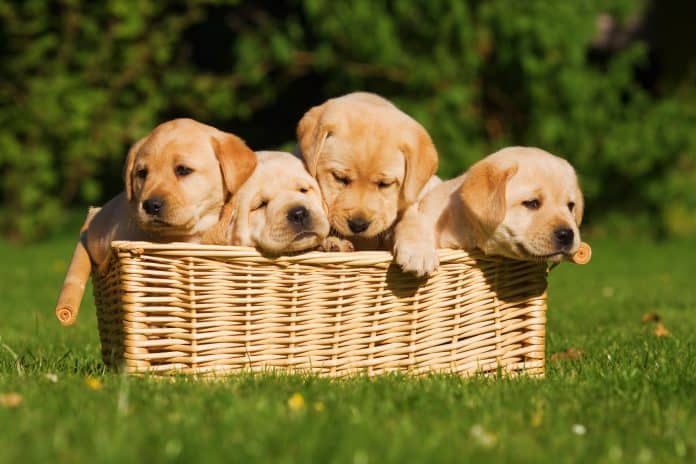









[…] puppies need early education to become a better-rounded dog in the […]
Thanks, Agnisha…
Suggestions provided in this blog could be useful for newbies who adopted a puppy.
A puppy needs an adequate amount of food according to the nutritional requirements. So, a person should make a diet chart.
In my point of view, cow milk is a rich source of nutrition for a puppy.
Nutrition plays a key role in the growth of a puppy and should not be ignored.
[…] can read more about puppy training to avoid any mistakes in the puppy’s growing […]